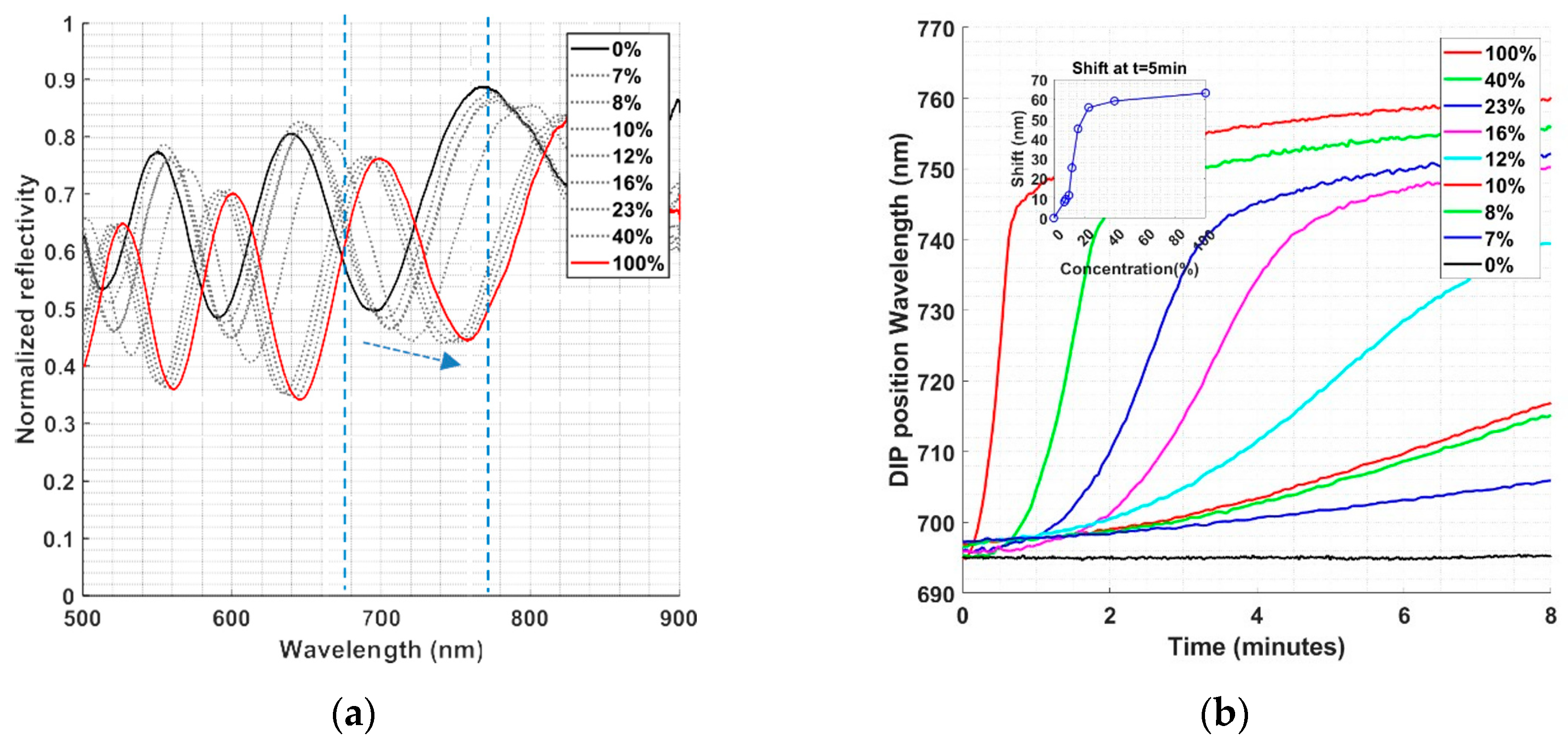Optical Interference Analysis of ZIF-8 Films for Chemical Vapor Detection †
Abstract
1. Introduction
2. Materials and Methods
3. Discussion
Author Contributions
Funding
Institutional Review Board Statement
Informed Consent Statement
Data Availability Statement
Conflicts of Interest
References
- Lu, G.; Hupp, J.T. Metal-organic frameworks as sensors: A ZIF-8 based Fabry-Pérot device as a selective sensor for chemical vapors and gases. J. Am. Chem. Soc. 2010, 132, 7832–7833. [Google Scholar] [CrossRef]
- Keppler, N.C.; Hindricks, K.D.J.; Behrens, P. Large refractive index changes in ZIF-8 thin films of optical quality. RSC Adv. 2022, 12, 5807–5815. [Google Scholar] [CrossRef] [PubMed]
- Hromadka, J.; Tokay, B.; Correia, R.; Morgan, S.P.; Korposh, S. Highly sensitive volatile organic compounds vapour measurements using a long period grating optical fibre sensor coated with metal organic framework ZIF-8. Sens. Actuators B Chem. 2018, 260, 685–692. [Google Scholar] [CrossRef]

Disclaimer/Publisher’s Note: The statements, opinions and data contained in all publications are solely those of the individual author(s) and contributor(s) and not of MDPI and/or the editor(s). MDPI and/or the editor(s) disclaim responsibility for any injury to people or property resulting from any ideas, methods, instructions or products referred to in the content. |
© 2024 by the authors. Licensee MDPI, Basel, Switzerland. This article is an open access article distributed under the terms and conditions of the Creative Commons Attribution (CC BY) license (https://creativecommons.org/licenses/by/4.0/).
Share and Cite
Estany-Macià, A.; Navale, S.; Fort-Grandas, I.; Joshi, N.; Romano-Rodríguez, A.; Moreno-Sereno, M. Optical Interference Analysis of ZIF-8 Films for Chemical Vapor Detection. Proceedings 2024, 97, 77. https://doi.org/10.3390/proceedings2024097077
Estany-Macià A, Navale S, Fort-Grandas I, Joshi N, Romano-Rodríguez A, Moreno-Sereno M. Optical Interference Analysis of ZIF-8 Films for Chemical Vapor Detection. Proceedings. 2024; 97(1):77. https://doi.org/10.3390/proceedings2024097077
Chicago/Turabian StyleEstany-Macià, Anna, Sachin Navale, Ignasi Fort-Grandas, Nirav Joshi, Albert Romano-Rodríguez, and Mauricio Moreno-Sereno. 2024. "Optical Interference Analysis of ZIF-8 Films for Chemical Vapor Detection" Proceedings 97, no. 1: 77. https://doi.org/10.3390/proceedings2024097077
APA StyleEstany-Macià, A., Navale, S., Fort-Grandas, I., Joshi, N., Romano-Rodríguez, A., & Moreno-Sereno, M. (2024). Optical Interference Analysis of ZIF-8 Films for Chemical Vapor Detection. Proceedings, 97(1), 77. https://doi.org/10.3390/proceedings2024097077






